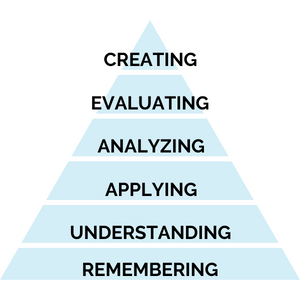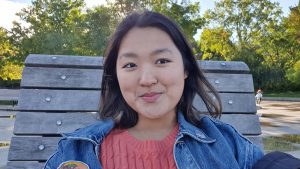Appendix A
Appendix A: Interactive Content in Text-Only
We made this book using Pressbooks, an open publishing platform that offers unique interactive opportunities for readers to engage with our text. However, when our book is downloaded in PDF format, some of that interactive content does not transfer over. Find the following text-only versions of this content:
- Anticipating: Reminders and advice (from “Anticipating” chapter)
- Colleges and universities – what’s the difference?
- Understanding your letter of acceptance
- Don’t forget to apply for your study permit
- Planning your housing search
- Learn more about your health insurance
- Have you met the immunization requirements to enter Canada?
- The 5 Rs of Culture Change: Fatima’s Experience (from “Arriving” chapter)
- Bloom’s Taxonomy (from “Adjusting” chapter)
- Study cycle (from “Adjusting” chapter)
- Meet our storytellers (from “Welcome and Introduction” chapter)
Anticipating: Reminders and advice (from “Anticipating” chapter)
Colleges and universities – what’s the difference?
In Ontario, international students can study at post-secondary institutions that are called either colleges or universities. Colleges can offer certificate programs, diplomas, apprenticeships, and degrees. At universities, you will find undergraduate and graduate degree programs, as well as other types of professional programs.
Academic programs will vary in terms of length and require different types of prerequisites (in other words, the pre-work or qualifications you need to be eligible for that program).
Understanding your letter of acceptance
Before arriving in Ontario, you will receive many messages from your learning institution, one of the most important being your letter of acceptance (it can also be called a letter of offer). This document is important for you as an international student because it will contain key information about the following:
- The name of the faculty, department, and/or academic program that you have been accepted into
- The length of your program (e.g. a start and end date)
- Important deadlines to note in your calendar (for example, by which date to accept the offer or when to pay your first installment of tuition fees)
- Institutional resources to help you understand the study permit application process (such as individual advising or information sessions)
- Other support offered by the institution specifically for international students
- Any additional documents or information that the institution requires from you in order to make you a full offer
Note: If your offer letter does not include all of the above details, you will probably receive more information from the institution after you accept your offer.
Tip! Often, colleges and universities will only communicate with enrolled students using an official institutional email account. This means that the personal email account you used to apply might not have the most up-to-date information regarding your program and studies. Look out for instructions on how to set up your official institutional email and check your new inbox frequently after that.
Don’t forget to apply for your study permit
In most cases, you must apply for a study permit before you arrive in Canada. For some students who have already departed their country of residence, they can apply for a study permit from within Canada. And in some cases, you can apply for a study permit when you arrive in Canada at the port of entry. Make sure you understand which option is available to you by learning more at https://www.canada.ca/en/immigration-refugees-citizenship/services/study-canada/study-permit/apply.html
Need extra help? Connect with your institution’s international student office for additional resources and advice on how to successfully apply for your study permit.
Are you planning to come with family members such as a partner/spouse and children? They may be eligible for a study or work permit, or a visitor visa. You must submit their applications online when you apply for your study permit.
Tip! All of Ontario’s postsecondary institutions have a Designated Learning Institute (DLI) Number that you will need to apply for your study permit. Find your school’s DLI at https://www.canada.ca/en/immigration-refugees-citizenship/services/study-canada/study-permit/prepare/designated-learning-institutions-list.html
Planning your housing search
After you accept your offer of admission, you will likely receive information about housing (also called accommodation) options from your college or university. Some campuses will have residences that you can stay at which might offer amenities such as a meal plan, internet access, or other incentives. Check the residence’s specifications carefully to make sure it will be a good fit for your needs.
If you decide to live off-campus, you will likely need to think about the following: creating a realistic monthly budget; your willingness to live with other roommates; the location’s proximity to campus or public transportation; and other similar considerations. Also remember that the monthly rent you see advertised might not include other important fees such as heating, internet, or renter’s insurance. Always ask the landlord or building’s management office if you are unsure!
Note: You might find that browsing online listings on classified advertising websites or on social media might be a convenient way to look for a potential place to live in your new Ontario city or town. Unfortunately, international students can often be targeted by scammers who post fake online listings or request money transfers before a lease has been signed. If possible, always visit the location first before you make a final decision; if you are unable to do so, ask a trusted friend to check out the space. Also be cautious if the landlord or building management wants you to pay additional fees and deposits that appear excessive or unexpected.
Tip! Consider booking temporary accommodation when you first arrive; this will allow you to browse more long-term options in-person and consider variables that matter to you (e.g. routes to campus or proximity to grocery stores).
Need extra guidance? Connect with your institution’s housing or student life office for additional resources and advice on how to successfully find a place to live.
Learn more about your health insurance
As an international student in Ontario, you will be enrolled in a primary health insurance plan. This insurance plan helps to cover the cost of hospital and medical services you may need to maintain your health (e.g. visiting a doctor’s office or needing to go to an emergency room).
Universities generally offer health insurance through the University Health Insurance Plan (UHIP), whereas colleges and other private institutions may present options from other providers. The cost for this plan will be added to your fees and is considered mandatory for all international students in most cases.
You might also find that you will be automatically enrolled – or given the option to participate – in supplementary health insurance plans. These supplementary plans might cover full or partial expenses such as prescription drugs, vision and dental care, travel health coverage, and other health needs.
Note: If you are arriving in Canada before the start of the academic term, make sure that you secure private travel insurance because most plans connected to your student status will only begin on September 1st of that year.
Have you met the immunization requirements to enter Canada?
Remember that to enter Canada as an international student, you must have a valid study permit (or letter of introduction that shows you have been approved for a study permit) and be attending a designated learning institution (DLI) with a COVID-19 readiness plan approved by Ontario. Learn more here about immunization requirements to enter Canada at https://www.canada.ca/en/immigration-refugees-citizenship/news/2021/07/international-students-and-travel-to-canada.html
Need extra help? Connect with your institution’s international student office for advice.
The 5 Rs of Culture Change: Fatima’s Experience (from “Arriving” chapter)
- Routines – Fatima finds that she must carefully plan out her mornings in a way that she didn’t have to before, since her high school was within walking distance of her house. At first, it’s stressful to figure out which public bus offers the quickest ride to campus, but after a few weeks of experimenting with different routes, she can now relax on the bus listening to audio books in French. During warmer months, Fatima even wakes up earlier so that she can walk to campus and enjoy some reflective time before a busy day of classes and studying.
- Reactions – Initially, Fatima finds it strange that classmates acknowledge her by saying “Hi, how are you?” but then immediately walk away. She feels embarrassed trying to answer, wondering if she had done something earlier to offend them. Eventually, she learns that this expression is more of a greeting than a question when in a hurry (similar to saying a quick “hello”) and begins to use this saying as well. She still sometimes feels self-conscious and unsure about how to engage in small talk, especially with classmates who are more acquaintances than friends.
- Roles – To earn some spending money, Fatima decides to take on a work-study job, which would be her first formal work experience. But she is soon overwhelmed by all the paperwork and training required to fulfil these responsibilities. She’s unsure if she can succeed in this position and initially thinks of resigning, but asks a fellow student colleague for advice about how they juggle life as a student and employee. She also finds it helpful to regularly chat with an advisor in student services about creating a calendar to prioritize and manage her stress related to these demanding roles.
- Relationships – Given how busy her schedule is, Fatima is not sure how to make friends without sacrificing time for reviewing her notes and working on assignments. She gets a tip from a peer that joining a study group might be a useful way to both socialize and keep on top of her workload. Over the semester, Fatima becomes closer to one of the students in her group – they both make a weekly goal to leave Sundays nights free for TV-watching as a reward for meeting goals. Fatima still feels guilty about not working harder, but knows that it’s also important to nurture this friendship.
- Reflections – Fatima never used to journal but learned about the value of noting down experiences, thoughts, and insights from a workshop she attended. As her family members are in a time zone five hours ahead of Canada, she finds it calming to spend time writing in a diary whenever she feels homesick. She soon finds that it’s also a useful way for her to manage her stress and decides to incorporate free-style writing as a strategy to brainstorm for her essays as well.
Bloom’s Taxonomy (from “Adjusting” chapter)
 At the Remembering level, you can recognize and recall information usually through a process of memorization.
At the Remembering level, you can recognize and recall information usually through a process of memorization.
At Understanding, you can summarize and explain information using examples.
At Applying, you can use information to solve new problems.
At Analyzing, you can check the validity of an idea.
And at Creating, you can come up with your own ideas based on your previous learning.
Study Cycle (from “Adjusting” chapter)

The Study Cycle includes:
- Preview and review before class: Read assigned chapters, review lecture slides and objectives, form questions about the material. Review material from a previous week.
- Attend class: Take meaningful notes that record and relate information.
- Review after class: Identify gaps and recall information.
- Study the material: Use active review to retrieve information.
- Assess your learning: Practice and self-test.
Meet our storytellers (from “Welcome and Introduction” chapter)








